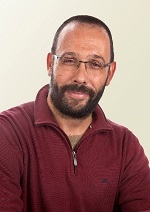Report on the brachytherapy track at ESTRO 2021 - PDF Version
To say that Covid-19 has had an impact on our regular conference schedule probably qualifies as a huge understatement. Nevertheless, and in spite of all the difficulties, it is encouraging that the European SocieTy for Radiotherapy and Oncology (ESTRO) managed to organise a mixed online/on-site event for this year’s conference. Although it is too soon to evaluate the impact on attendance on a global scale, it is important to note that having been there in person I can confirm that our conference holds strong and that meetings, talks, and even personal interactions as we once knew them are coming back.
Since the world brachytherapy conference had taken place only three months earlier, a more reduced brachytherapy track than usual was presented at ESTRO 2021. It took place on Saturday 28 August and Sunday 29 August. Even though the weekend was sunny, the attendance at the sessions was good, when compared with that at other tracks in the conference. The brachytherapy track started with a teaching lecture by Dr Piotr Wojcieszek (brachytherapy department, Maria Sklodowska-Curie National Research Institute of Oncology Gliwice Branch, Gliwice, Poland) with the title “New developments in skin cancers treatment: is brachytherapy the new frontier especially for the face?” This gave a complete and thorough review of the role that could be played by brachytherapy in dermato-oncology from a clinical and physical perspective. After that, a debate entitled “prostate cancer: short treatments by stereotactic body radiation therapy (SBRT) or brachytherapy?” took place. It was led by Dr Giulia Marvaso (radiation oncologist at the European Institute of Oncology, Milan, who supported SBRT) and Professor Peter Hoskin (consultant in clinical oncology, Mount Vernon Cancer Centre, Middlesex, UK, who supported brachytherapy). Really interesting and comprehensive arguments in favour of both procedures led to an illuminating discussion on the strong and weak points of both options. Finally, the audience voted; two-thirds preferred brachytherapy to SBRT.
The track continued with a session devoted to our sister conference, the WCB, entitled “Highlights of WCB 2021”. In this session, some of the most interesting contributions to the WCB replayed their contents to the ESTRO audience. The talks covered different clinic- and physics-related subjects: intensity modulated high dose-rate ocular brachytherapy using Yb-169 and Se-75 by Dr Justine Dupere; tumour regression of cervical cancer during chemoradiation evaluated by the T-score in the epidemiological study of familial breast cancer (EMBRACE) I by Dr Jacob C. Lindegaard; accelerated partial breast irradiation (APBI) versus very APBI in the elderly: a comparison analysis of oncological outcome and late toxicity by Jean-Michel Hannoun-Levi; a comparative study of brachytherapy vs. radical cystectomy for cT1-2 muscle-invasive bladder cancer by Dr Bradley Pieters; and development of a dynamic-shielding intensity modulated endorectal brachytherapy applicator by Alana Thibodeau-Antonacci. The only downside of this session was that listeners could not put real-time questions to the speakers. The morning session concluded with the Groupe Européen de Curiethérapie (GEC)-ESTRO assembly and the report of the GEC-ESTRO chair, Dr Ina Jürgenliemk-Schulz, on the various activities that had been performed during these difficult times.
The afternoon session was devoted to a joint symposium with the European Society of Gynaecological Oncology (ESGO) on the clinical aspects of the updated ESGO-ESTRO-European Society of Pathology (ESP) guidelines in endometrial cancer. This symposium was focused on the clinical aspects and listeners were fortunate to hear from a panel of world experts: Dr Xavier Matias-Guiu, Dr Nicole Concin, Dr Carien Creutzberg and Dr Alexandra Taylor, who gave a comprehensive and detailed overview of the subject.
On Sunday two symposia were slotted into the brachytherapy track. The first, with a focus on clinical practice, discussed salvage brachytherapy for breast cancer and incorporated issues that ranged from patient selection (Dr Polgar Csaba) through techniques after second breast-conserving surgery (Dr Hannoun-Levi), surface-brachytherapy techniques for the thoracic wall (Dr Adam Chichel) and interstitial salvage brachytherapy (Dr Peter Niehoff). The second symposium, entitled “Next generation brachytherapy treatment planning systems: what do we want and what do they need?” discussed current clinical needs and the possibilities that were offered by the new treatment planning systems. The role played by commercial, model-based dose calculation algorithms was discussed by me, while Dr Pieters and Elisa Placidi commented at length about the achievement of a completely automated dose planning system in brachytherapy not only in a research environment but also in clinical practice.
This year there were no printed posters on display, as all posters were presented as e-posters. Of about 1000 posters that were presented, only 50 or so covered brachytherapy issues. Of those, six were considered for poster discussion and three were discussed in the online poster highlights session. Although it was clear that accommodation of 1000 physical posters would be impossible, especially with social distancing rules, I missed the chance to talk with the, usually young and enthusiastic, poster authors to discuss the finer details and interesting highlights of their work.
In summary, I arrived at the conference in a rather pessimistic mood, expecting poor on-site participation and limited interest in the brachytherapy track because the WCB meeting had occurred so recently beforehand. I am glad that I was proved wrong, and that brachytherapy within the ESTRO conference is still an attractive track that draws discussion and a lively exchange of ideas.

Javier Vijande
Medical physics group
La Fe University
Valencia, Spain